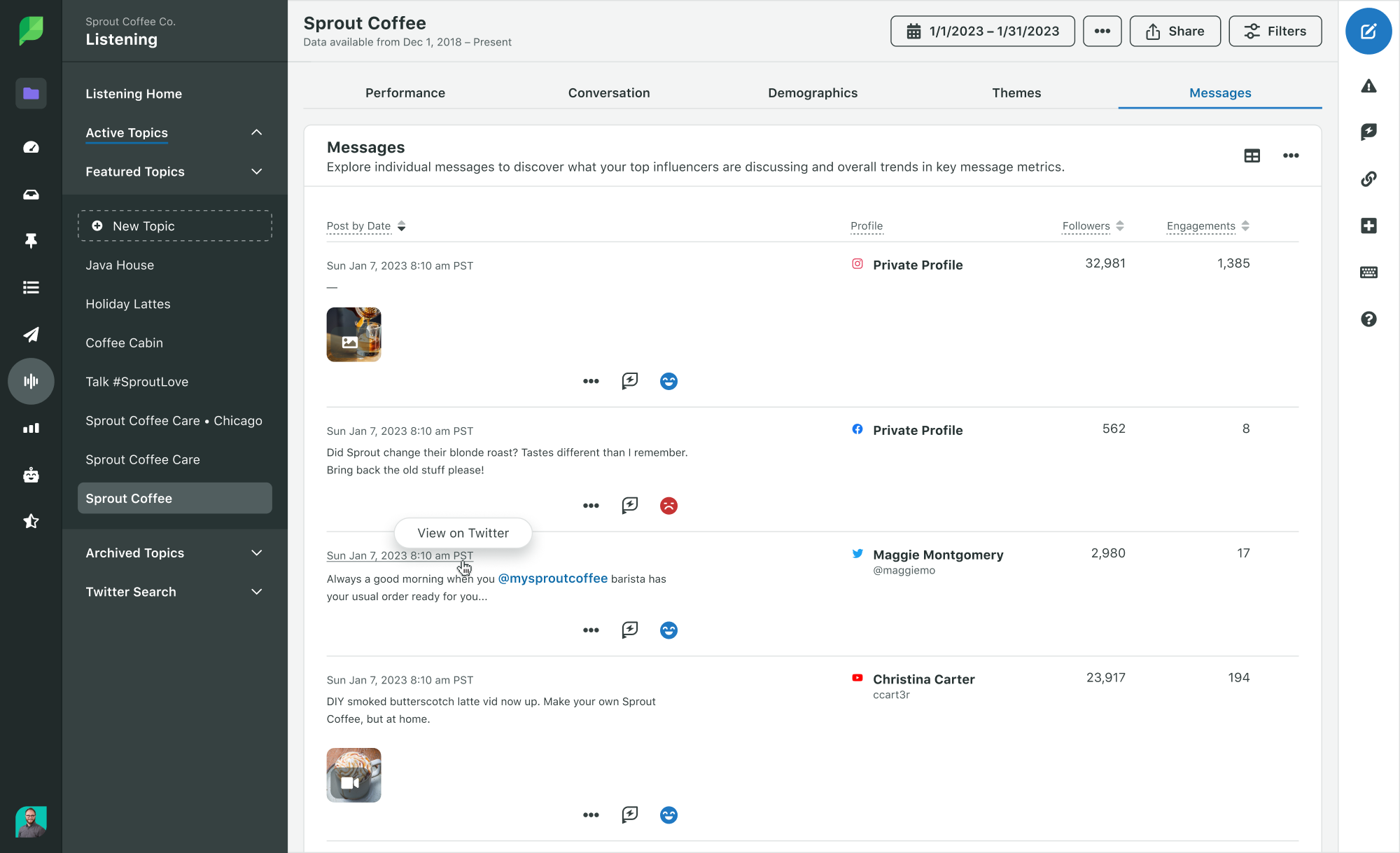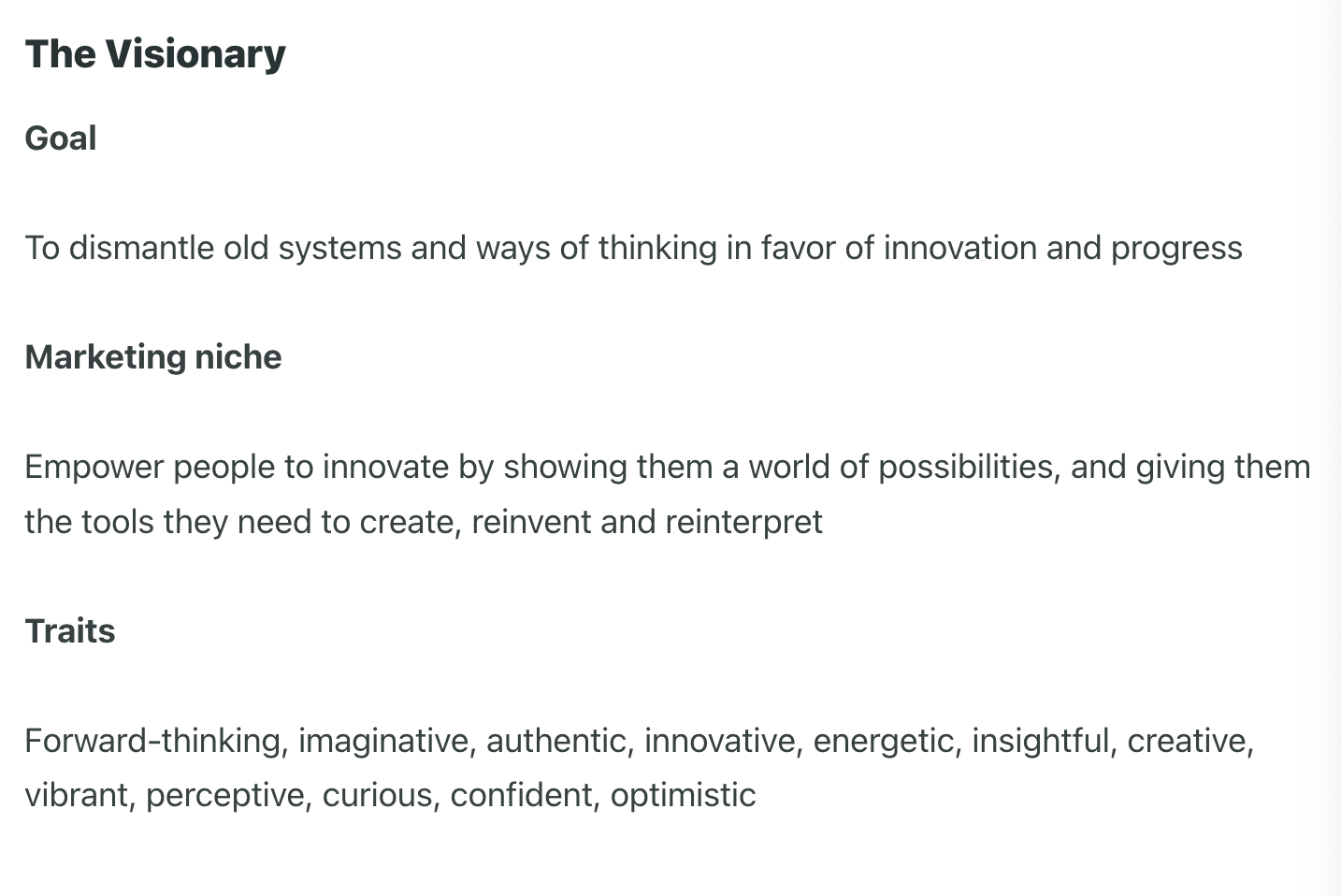Think about your favorite examples of a stand-out brand voice. Perhaps it’s a surf gear retailer that takes on the attitude of a surfer or the teen fashion brand that uses slang to connect with its target audience. Or maybe it’s the candy company that uses humor to delight customers of all ages.
In branding work, people often think about how a brand looks visually, from fonts and colors to design styles, but brand voice is also key to being memorable.
In this article, we’ll dive into the details on how voice and tone enhance your brand identity, tips for developing your voice and three stellar brand voice examples to help inspire you.
What is brand voice?
Brand voice is the distinct personality a business curates to communicate with its target audience across mediums. It includes a unified approach to tone, style and messaging to build brand recognition and nurture connection with the audience.
Imagine you went to a dinner party and you’re chatting with all the guests. One person stands out because they’re great at storytelling—the flow of their words, their language and their personality all make for a memorable experience.
Your brand voice can be that dinner guest. Think about who your brand is online. If your brand was a person, what personality traits would they take on and what would they avoid? What phrases and stylistic choices does your brand use?
All of the above contribute to your brand voice, but there are many elements to creating one. For example, Sprout Social’s brand guide, Seeds, outlines multiple pillars and categories to define our brand personality and messaging.
Apply your brand voice everywhere your brand speaks, including advertising, newsletters, social media posts, customer care responses and internal communications like company announcements.
Why does brand voice matter?
Brand voice is essential to being consistent and recognizable. The digital landscape is crowded, so your written content and video scripts need the same attention and consistency you dedicate to other elements of your brand presence.
You’ll only stand out so much on the basis of your visual content, logo or product features alone. The 2022 Sprout Social Index™ shows 34% of consumers want to see posts highlighting the brand’s personality. A well-crafted voice is a key part of doing that, transforming a whisper in the social space into attention-commanding bellows.
All popular forms of content—from testimonials to video—are driven by brand voice.

The power of a strong brand voice is also important as social media becomes more saturated with artificial intelligence-generated content.
AI can assist with many marketing efforts, but it doesn’t have personality. As more content is created using AI, human marketers will need to inject the brand’s unique voice to cut through the noise. Marketers understand the elements of their brand voice inside and out, so they should be leading the charge to fine-tune the organization’s voice. Brand awareness succeeds when you can identify a brand by their content before you even see who posted it.
5 tips for developing your brand voice
Now that we’ve covered the importance of givng your brand a distinct personality, use these five tips to refine your brand voice.
1. Identify your audience and personas
Your brand voice should align with the company’s values and goals, but also think about who you’re talking to and why.
Start formulating your brand voice by considering your target audience and marketing personas. As you work through your audience and personas, list out personality traits, adjectives and common vocabulary you want to take on as a brand.
For example, let’s say a Los Angeles-based brand is targeting a younger audience in California. They could use regional language such as “SoCal” or “NoCal” that resonates with the target audience.
However, it’s important to challenge your assumptions by doing research into your target audience to ensure you’re truly speaking their language. Use Sprout Social Listening tools to track conversations surrounding your brand. Then explore customer sentiment and opinions on specific products, topics and competitors to optimize your messaging and positioning.

Since the idea of brand personality is abstract, Sprout’s brand voice uses archetypes and personas to help characterize the brand and bring it to life. Our brand archetype is the Visionary (also known as the Creator or Builder), and is broken down into our goal, marketing niche and traits. For example, the Visionary’s goal is to dismantle older systems and thoughts in favor of innovation and progress. Some traits include creative, vibrant, forward-thinking, imaginative and curious.

We derived our brand persona, the Luminary, from our brand archetype. Creating content and writing with a brand persona informs our choices around voice, tone and language. This persona’s role is to illuminate possibilities and has personality traits such as intelligent, confident and innovative. The Luminary sounds bold, inspiring and authentic, which leads us to our next step: Audit your current voice.

2. Audit your current tone and voice
Take a look (and listen) at your current brand voice by grabbing examples from all your communication channels. This will give you an overview of what the voice is like currently.
Look for inconsistencies, such as variations in voice across different writers and word choices. Note how your target audience interacts with you and how they speak.
Identify your top-performing content and take notes on the voice/tone used. Why did the post or video resonate? Does it use a funny tone, include trends or internet lore relevant to your audience? Does it provide valuable information in a digestible way? What voice and tone traits does your best content have in common?
With Sprout, easily pinpoint your highest and lowest performing content by viewing the Post Performance report.

Our listening tool unearths current topics your audience is talking about online. It also gives you a lens into the language and jargon your audience uses so you can optimize your voice and copy to better resonate with them.
A piece of advice: Tweak your voice rather than stray too far away from your brand’s current operations. You want to present your voice authentically and not robotically, or give the appearance of just chasing trends and hot topics.
Once your audit is complete, you’ll be able to visualize your brand’s current personality and begin the process of brainstorming more traits that you want to emulate.
3. Tailor your tone to different content and channels
Brand voice is what you say and brand tone is how you say it. Your tone will vary based on the content type and channel, so you’ll need to adjust accordingly.
For instance, an organic social post requires a different tone than responding to a customer complaint or question. A light-hearted tone is appropriate for organic posts, but a professional, concerned tone is more applicable for customer care responses. In terms of social networks, you wouldn’t use the same tone on Twitter and LinkedIn because one is more casual than the other.
Identify common scenarios you come across as a brand and categorize them into the different tones you would take on, along with making distinctions by network.
For example, at Sprout, we’ve developed voice and tone guidelines for our brand voice across various scenarios, such as the difference between more formal media statements and casual social responses. We break done uses cases for tone by the situation:

We also provide guidelines by audience and content type:


4. Document everything and be consistent
Just like your visual brand guide and social strategy, your brand voice needs to be documented. A brand style guide, like Sprout’s Seeds, will help multiple departments. It exists as a reference for anyone who writes in the brand’s voice, keeping social media posts and marketing copy in check and consistent.
Some components of the document include personality traits, common vocabulary, brand phrases and most importantly, examples. You want to write out plenty of examples that demonstrate both how to write within your intended brand personality and what types of choices fall too far outside of your defined style. If you work with freelancers, consider public documents to ensure external contributors capture the brand voice.
Along with listing appropriate tones by scenario and channel, make a list of do’s and don’ts with examples to illustrate the ideal brand voice.
“Authentic” is one descriptor for Sprout’s brand voice. In the example below, we show sentences that capture what to avoid and what to aspire to, while providing concrete tips for authentic writing.

Outlining what not to do makes it clear what your brand is trying to accomplish, and makes it easier for people to craft copy that is closer to your brand’s voice.
5. Monitor, review and adapt
Developing a brand voice is not a one-time effort. It should be reviewed and refined at designated times. You should review regularly such as every quarter, but also consider voice during major branding overhauls or other significant events that alter your brand strategy.
Language evolves and the words you used five years ago might not be in style—or even have the same meaning—today. Without a consistent check in on your brand voice, you risk sounding out of date, especially to your target audience.
To identify if your brand voice resonates over time, use Sprout’s reporting and analytics tools, like tagging. One of the benefits of tagging on social media is to track and compare content over time. As you use these tools, you’ll be able to adapt your voice as needed based on data-driven results.
3 brand voice examples you can learn from
Fenty Beauty
Fenty Beauty’s voice is bold, direct and authentic—just like the makeup brand’s founder Rihanna. Not only does their voice align with Rihanna’s brand, but it also resonates with their target audience: Millennials and Gen-Zers who value unapologetic self expression.

The brand evokes a conversational tone that you would use with a friend, a signal that they value engagement and community. Fenty Beauty carries this casual tone across its content from SMS marketing texts to social media copy.

Oatly
Oatly’s branding work is a combination of fun illustrations and quirky copy. You’ll find the brand voice present in everything from their packaging to their social media captions and short-form videos.
In the tweet below, the brand uses a witty, yet lighthearted and conversational tone to introduce a video clip addressing customer skepticism around swapping oat milk into their tea. They also link to the “Tea Report,” a long-form content piece that also incorporates Oatly’s humorous tone.

Even their website cookie policy has gone through brand voice work and demonstrates their signature approach to including humor in all their copy.

Slack
Slack is a great example of a unique B2B brand voice. The workplace communication platform’s writing guidelines describe the Slack voice as “clear, concise and human, like a friendly, intelligent coworker.” Along with addressing voice and tone, Slack outlines stylization guidelines, copy principles and rules for appropriate language, emojis and using the Slack brand name.

The goal is to be casual and welcoming, but straightforward and meaningful at the same time. Their brand voice also evokes the product’s value within workplace communication and collaboration, like in the Twitter thread below:

Get your brand voice heard
Just like an engaging human storyteller, your brand’s voice and personality will connect with your audience. Embrace finding and developing a brand voice tailored to your company and audience. Take our interactive brand persona quiz to learn how to bring your brand voice to life on social.
The post Brand voice: What it is and why it matters appeared first on Sprout Social.